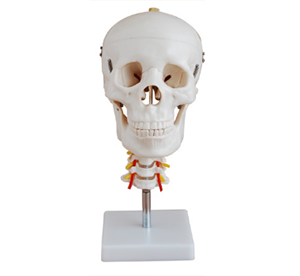23-10-2024
ADA MED SUPPLY LIMITED
Article tag: Cerebral artery model medical anatomy model
Students can directly touch and observe the model through the cephalic appendicular artery model. This interactive learning method can stimulate students' interest and enthusiasm in learning. At the same time, the details and annotations on the model also help students grasp key knowledge faster and improve learning efficiency. Compared with boring theoretical learning, model teaching is more lively and interesting, making students easier to accept and understand.
It is not only a teaching aid, but also a bridge connecting theory and practice. Through the simulation operation and practical exercise on the model, students can better apply the theoretical knowledge to the actual situation, and deepen the understanding of the surgical process and operation skills. This combination of theory and practice helps to develop students' clinical thinking and surgical skills.

In a neurosurgical team, communication and collaboration are critical. It can be used as a medium for team discussion and communication to facilitate communication and collaboration among doctors, medical students and technicians. By jointly observing and analyzing the model, team members can share each other's experiences and insights to jointly develop treatment options and surgical plans, thereby improving the overall collaboration and productivity of the team.
In summary, the cephalic appendicular artery model has reversed the learning experience of neurosurgery by enhancing the three-dimensional sense and spatial cognitive ability, improving learning efficiency and interest, promoting the combination of theory and practice, and strengthening the ability of communication and collaboration. It is not only an important auxiliary tool for neurosurgery teaching, but also an important force to promote the development and innovation in the field of neurosurgery.